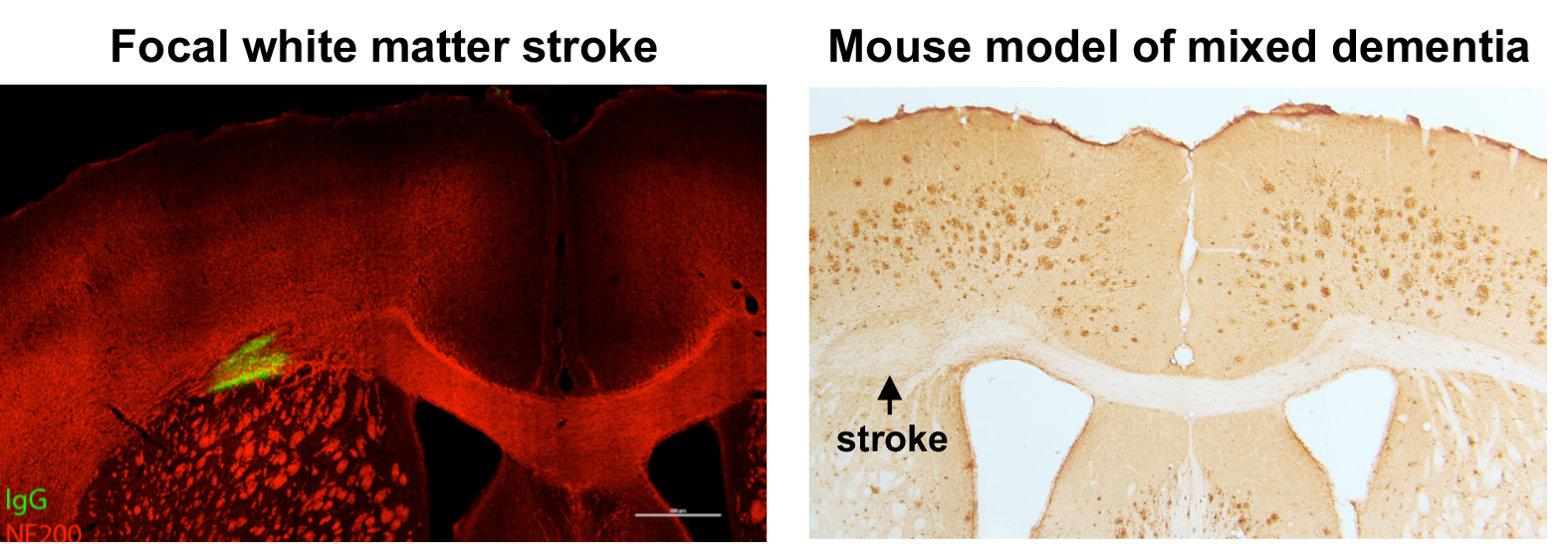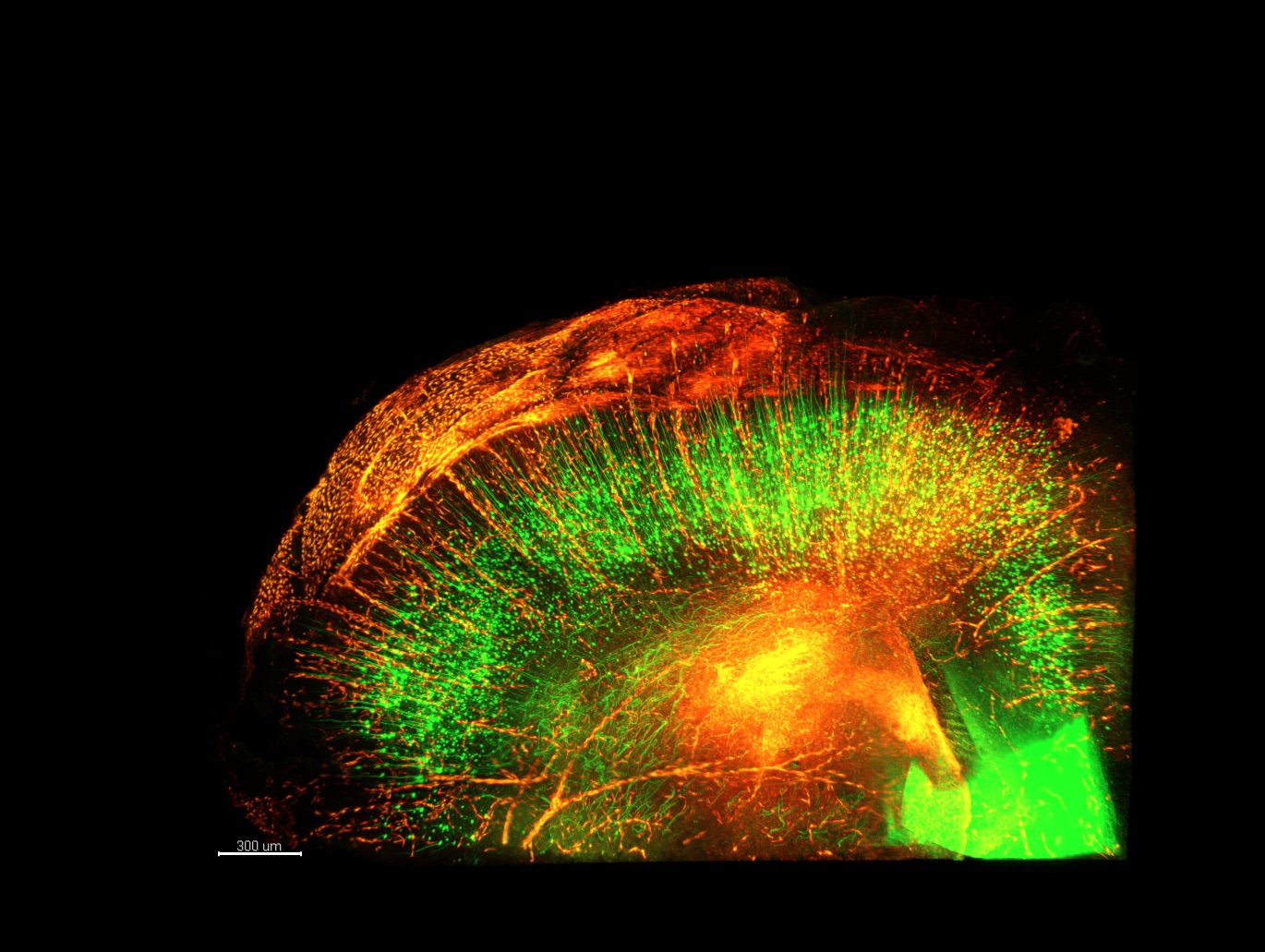

Up to 25% of all cases of dementia are caused by vascular disease in the form of subcortical ischemic white matter injury. The relationship between vascular injury and Alzheimer’s disease pathology is increasingly recognized yet the molecular pathways that regulate this interaction are unknown. With the support of UCLA CTSI, BRI and AFAR, we have developed a mouse model of mixed vascular and AD dementia. Using this mixed model, we find that with a subcortical stroke prior to the deposition of amyloid plaques, plaque load in the cortex is reduced. This reduction of cortical plaque load is associated with mild improvements in cognitive function and a more robust responsiveness of microglia to cortical amyloid. Identification of the molecular drives of this process are ongoing.
In related work, we used FACS and RNA-seq of cortical neurons after stroke to show that a subcortical axonal injury activates transcriptional activity in cortical neurons that regulates tau phosphorylation. These studies suggest a tantalizing relationship between the most common pathologies seen in dementia. We are currently developing unique tools to explore transcellular interactions in Alzheimer’s and vascular dementia using our mixed model approach together with cell-specific transcriptional profiling.